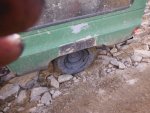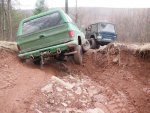Again you fail to look at this as a functioning unit. The "front" of the transfer-case is bolted down to the rear cross-member. Yes there is some give in the rubber mount but not much, so if that whole engine/transmission/transfer-case unit is moving then yes that "rod" adds a tremendous amount of support to that "unsupported weight" of the transfer-case. If you think of the vehicle as a "body" then if your asking why do I need to wear shoes on my feet "how does that effect the rest of my body ? " you will start to see what I'm trying to tell you. Without shoes the body will stumble on rough ground, possibly fall. Now that will cause harm to the rest of the "Body". It's the same with your truck. Without that extra support to the "unsupported" weight of the transfer-case it can and possibly will cause harm to the transmission housing, drivelines, possibly the engine mounts etc. One thing I learned early on is any vehicle should be looked at as whole entity not just individual parts. Everything is "literally" connected !!!!
So where we differ is that you say that the rod provides support vertically while I feel that it adds strength in the fore/aft direction. Well, mostly when under tension.
To me, and using your body analogy, that would be like holding a weight with your arm stretched out, versus pulling (or pushing) on that stretched out arm.
Also, the fact that the rod is just that, a rod, used as a strut, makes it strong only under tension. There's obviously some strength in it under compression, but only until it starts bending, which doesn't take much.
It seems to me that it's the wrong material for vertical support, even if the rod would be mounted differently in the engine end. As it is, the single fastener at the engine is basically a hinge. So yes, I am failing to see this the way you do.
Maybe we're just talking past each other somehow, but my take is that the rod prevents the right side of transfer case from moving rearwards, through triangulation.
And if I understand you correctly, you say that the rod supports the transfer case vertically, and helps with rotational forces.
At least it seems like we're talking about the same rod.



